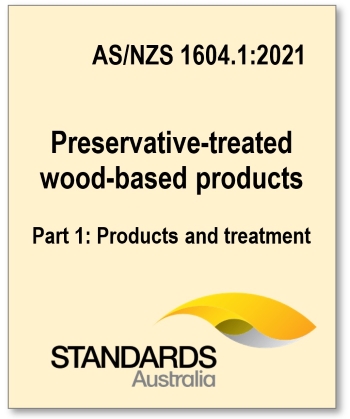Hazard classes

There are a range of different treatment chemicals and methods used to preserve timber. The most appropriate treatment for a particular species of timber and end-use will depend on which organisms the timber needs to be protected against and how severe its exposure will be.
Australian/New Zealand Standard AS/NZS 1604 Preservative-treated wood-based products sets out six hazard classes to describe the different types of exposure and biological hazards that timber might be subjected to when it’s put into service.
Below is a summary of the hazard classes. We’ll discuss the different preservative chemicals and methods used to treat timber to these hazard levels in the following lessons.
| H1: Inside, above ground | |
| Service conditions: | Protected from weather and termites, well ventilated |
| Biological hazards: | Lyctid borers |
| Examples of end-uses: | Framing, flooring, furniture, interior joinery |
| H2: Inside, above ground | |
| Service conditions: | Protected from wetting, but potentially exposed to inside termite attack |
| Biological hazards: | Borers and termites |
| Examples of end-uses: | Wall and roof framing, flooring, etc, used in dry situations |
| H2F: Same as H2, but used specifically with envelope-treated framing (e.g. ‘blue pine’) used south of the Tropic of Capricorn (i.e. south of Rockhampton Queensland) | |
| H2S: Same as H2, but used specifically with laminated veneered lumber (LVL) and plywood used south of the Tropic of Capricorn | |
| H3: Outside, above ground | |
| Service conditions: | Subject to rainwater wetting and leaching |
| Biological hazards: | Moderate decay, borers and termites |
| Examples of end-uses: | Weatherboard, fascia, window joinery, framing, decking |
| H4: Outside, in-ground | |
| Service conditions: | Subject to severe rainwater wetting and leaching |
| Biological hazards: | Severe decay, borers and termites |
| Examples of end-uses: | Fence posts, garden walls, pergola posts, landscaping timbers |
| H5: Outside, in-ground – high risk | |
| Service conditions: | Subject to extreme rainwater wetting and leaching |
| Biological hazards: | Very severe decay, borers and termites |
| Examples of end-uses: | Retaining walls, piling, house stumps, building poles, cooling towers |
| H6: Marine waters | |
| Service conditions: | Subject to prolonged immersion in sea water |
| Biological hazards: | Marine wood borers and decay |
| Examples of end-uses: | Boat hulls, marine piles, jetties, landing steps |